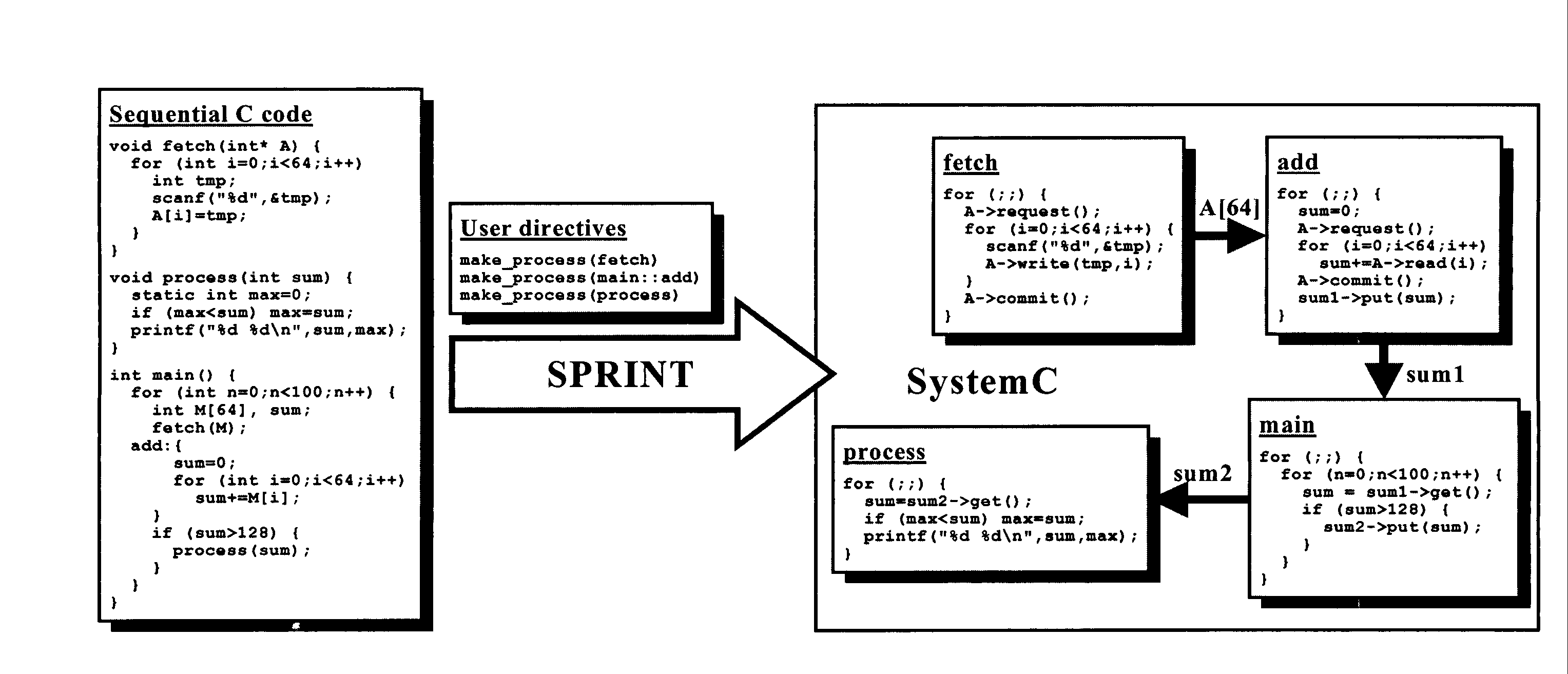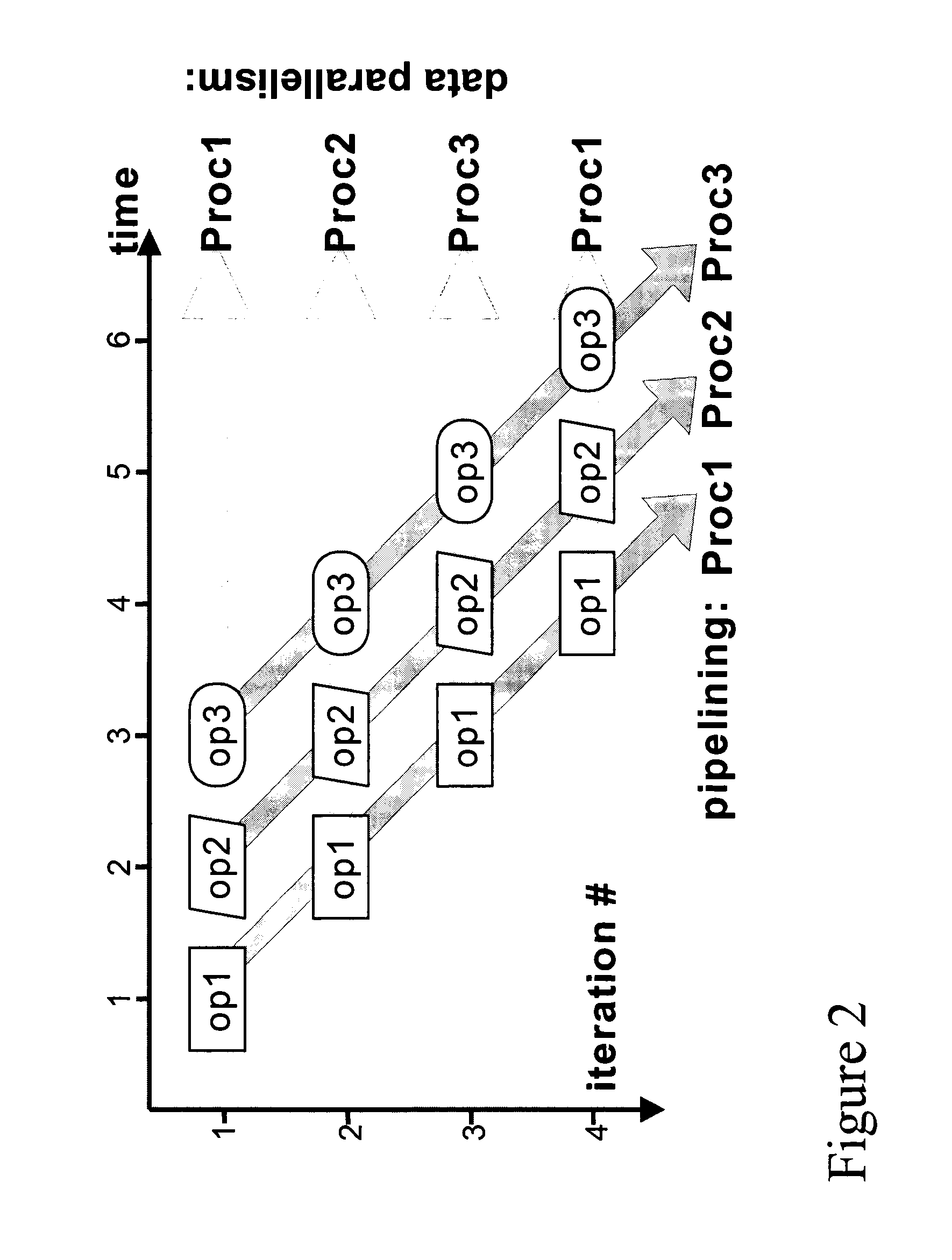System and method for automatic parallelization of sequential code
a sequential code and automatic parallelization technology, applied in the field of automatic parallelization of sequential code, can solve the problems of large impact on performance and power, relatively complex control flow, and parallelism only apply to a single processor
- Summary
- Abstract
- Description
- Claims
- Application Information
AI Technical Summary
Benefits of technology
Problems solved by technology
Method used
Image
Examples
Embodiment Construction
[0011] A first aspect of the invention is a computerized method for automatic transforming essentially sequential code which are to be executed in parallel to achieve the same or equivalent result to the sequential code. The parallelized code may be a task-level or coarse grain or functional parallelized code. Parallel executable codes are denoted task parallel or coarse grain parallel if they are intended to run on a separate processor.
[0012] In an embodiment of this aspect of the invention said essentially sequential code is transformed into pipelined code. Pipelining can be considered as a subset of task-level or coarse grain or functional parallelization. Pipelined code is generally code with at least two processes or tasks, one of said processes or tasks generating / producing information (data) in a first time frame, for use / consumption by another of said processes or tasks in a second (later) time frame. In pipelining, processes using different data can be executed at the same...
PUM
 Login to View More
Login to View More Abstract
Description
Claims
Application Information
 Login to View More
Login to View More - R&D
- Intellectual Property
- Life Sciences
- Materials
- Tech Scout
- Unparalleled Data Quality
- Higher Quality Content
- 60% Fewer Hallucinations
Browse by: Latest US Patents, China's latest patents, Technical Efficacy Thesaurus, Application Domain, Technology Topic, Popular Technical Reports.
© 2025 PatSnap. All rights reserved.Legal|Privacy policy|Modern Slavery Act Transparency Statement|Sitemap|About US| Contact US: help@patsnap.com



